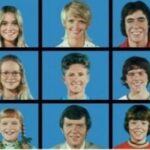Say the words “The ant and the aardvark” to people between the ages of 35 and 55 and you will instantly bring a smile to their faces. There are certain nostalgic touchstones to a generation’s childhood that often get lost in the passage toward adulthood as a result of pop culture forgetting even the most popular of entertainment. In some cases, such as The Brady Bunch or Gilligan’s Island, these touchstones of the past are consistently revealed to the next generation either in their original form or through a renewed attempt to infuse into them the psychic energy of contemporary times. And then there are cases like the incredibly popular Saturday morning cartoon series The Ant and the Aardvark that seems to seep from the consciousness and take up residence in the subconscious until the memory is forcibly pulled to the surface.
The Ant and the Aardvark was part of the Pink Panther series of cartoons that originally aired in movie theaters before the feature film. This was in the late 60s and early 70s, marking the end of that particular lamented aspect that made filmgoing so much more fun forty years ago than it is now. Whereas today’s movie audiences are “entertained” by commercials that blast out with the volume turned up to 11, previous to the 1970s movie audiences were routinely entertained by Tom and Jerry, Bugs and Elmer and the Ant and the Aardvark before the movie began. After these initial airings in movie theaters, the Ant and the Aardvark moved to television and became a fixture on the Pink Panther cartoon series alongside the panther himself and the later introduction of the inspector. What made the Ant and the Aardvark stand out from the Pink Panther was the introduction of dialogue. And what dialogue it was!
The voices were supplied by the nearly forgotten impressionist John Byner. Byner was an omnipresent figure in the 60s and 70s, doing his shtick as an impressionist on everything from The Flip Wilson Show to The Tonight Show with Johnny Carson. The voices on The Ant and the Aardvark may seem funny without connotation to today’s viewers. The small red ant possesses the smoothly cool hipster sound of the great Dean Martin, while the blue aardvark has the deeply Jewish comic stylings of Jackie Mason, best known to modern television viewers as Krusty the Klown’s rabbi father on The Simpsons. The Ant and the Aardvark is dependent for most of its humor on Byner’s voice work because, like Tom & Jerry or Itchy & Scratchy, the plot is deadeningly repetitive. The aardvark spends the entirety of each episode trying to successfully eat the ant. Each episode introduces different complications, of course, including my favorite in which the ant gets this nifty little motorcycle. But what draws that smile to the face of those in that particular age span of which I wrote is the memory of that little ant who talks like Dean Martin and that overly Yiddish anteater. The one liners are hilarious and the ant’s almost utter disregard for the intent of the aardvark serve to give it a feeling that is absent from the similar Tom & Jerry stories. In addition, much like the Pink Panther, this cartoon also features a brilliant soundtrack, mostly one made up of a magnificent Dixieland jazz sound that you will be humming for days afterward.
The Ant and the Aardvark has been unfairly forgotten and deserves to be given a second chance at life. My own two young children watched an Ant and the Aardvark collection on DVD courtesy of Netflix recently and if the amount of laughter generated by them is any indication of how the cartoon would be received on The Cartoon Network, then it is time for that network that is now more than halfway to pathetic to buy the rights and create a whole new generation of fans whose faces will light up at the mention of the words Ant and the Aardvark.




